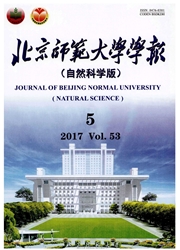

 中文摘要:
中文摘要:
荒漠河岸林是长期适应干旱区内陆河流域环境的产物,具有独特的水分利用和生存策略.对黑河下游胡杨、柽柳等主要荒漠河岸林植物液流、水势、木质部导水率、根系水分再分配以及植物水分来源等的测试分析表明,在降水稀少、蒸发强烈的黑河下游,胡杨、柽柳主要利用的是深层土壤水和地下水,其中成熟胡杨主要吸收地下175~325 cm处土壤水和地下水供其蒸腾和生存所需;胡杨根系水力提升过程主要发生在10~70 cm土层,蒸散导致的土壤耗水量中有10%来自根系提升的水量;植物根和枝条木质部的初始导水率(Ks0)和最大导水率(Ks,max)相对较高,其中柽柳木质部的潜在导水能力比胡杨强;胡杨、柽柳液流速度呈单峰型,在午后达到峰值,黎明前水势无显著变化,反映未受到严重水分胁迫;黑河下游河道附近的地下水埋深大多在4m以内,基本可以满足荒漠河岸林植物的生长发育,黑河下游荒漠河岸林生态系统处于稳定和发展状态.
 英文摘要:
英文摘要:
Desert riparian forests are the result of long-term adaptation to a particular environment in arid inland area,with special water use and survival strategies.In the this study the water potential,sap flow, hydraulic conductivity,hydraulic lift,and water use sources of Populus euphratica and Tamarixramosissima, major constructive species in the desert riparian forest in the lower Heihe River,were investigated.It was found that Populus euphratica and Tamarix ramosissima mainly used deep subsoil water and groundwater, mature Populus euphratica in the lower reaches of the Heihe River mainly absorbed soil water and groundwater at 175~325 cm for transpiration.The hydraulic lift of Populus euphratica roots mainly occurred at soil layer of 10~ 70 cm,where lift water accounts for 10% of water consumption.Initial and maximum hydraulic conductivity of roots and stems xylem of Populus euphratica and Tamarix ramosissima were high.Moreover, potential hydraulic conductivity of Tamarix ramosissima xylem was stronger than that of Populus euphratica xylem.Daily variation of the main trunk sap flow rate of Populus euphratica showed a unimodal distribution and reached its peak at 12:00 LT.There was no significant change in water potential of Populus euphratica at predawn,indicating that Populus euphratica and Tamarix ramosissima did not suffer serious water stress. Groundwater depth in lower reaches of the Heihe River was within 4 m,suitable for growth and development of desert riparian forest.
 同期刊论文项目
同期刊论文项目
 同项目期刊论文
同项目期刊论文
 Simulation of the effect of root distribution on hydraulic redistribution in a desert riparian fores
Simulation of the effect of root distribution on hydraulic redistribution in a desert riparian fores Analysis of dominant factors influencing moisture change of broad-ovate leaves of Populus euphratica
Analysis of dominant factors influencing moisture change of broad-ovate leaves of Populus euphratica The threshold of soil moisture and salinity influencing the growth of Populus euphratica and Tamarix
The threshold of soil moisture and salinity influencing the growth of Populus euphratica and Tamarix Xylem hydraulic conductivity and embolism in riparian plants and their responses to drought stress i
Xylem hydraulic conductivity and embolism in riparian plants and their responses to drought stress i Photosynthetic performance of two poplar species in shelterbelt under water-saving irrigation in ari
Photosynthetic performance of two poplar species in shelterbelt under water-saving irrigation in ari Hydraulic redistribution of soil water in Populus euphratica Oliv. in a central Asian desert riparia
Hydraulic redistribution of soil water in Populus euphratica Oliv. in a central Asian desert riparia The effects of oasis ecosystem hydrological processes on soil salinization in the lower reaches of t
The effects of oasis ecosystem hydrological processes on soil salinization in the lower reaches of t Progress, challenges and prospects of eco-hydrological studies in the Tarim River Basin of Xinjiang,
Progress, challenges and prospects of eco-hydrological studies in the Tarim River Basin of Xinjiang, Dew formation and its long-term trend in a desert riparian forest ecosystem on the eastern edge of t
Dew formation and its long-term trend in a desert riparian forest ecosystem on the eastern edge of t Water use strategies of the desert riparian forest plant community in the lower reaches of Heihe Riv
Water use strategies of the desert riparian forest plant community in the lower reaches of Heihe Riv Sap flow characteristics of four typical species in desert shelter forest and their responses to env
Sap flow characteristics of four typical species in desert shelter forest and their responses to env 期刊信息
期刊信息
